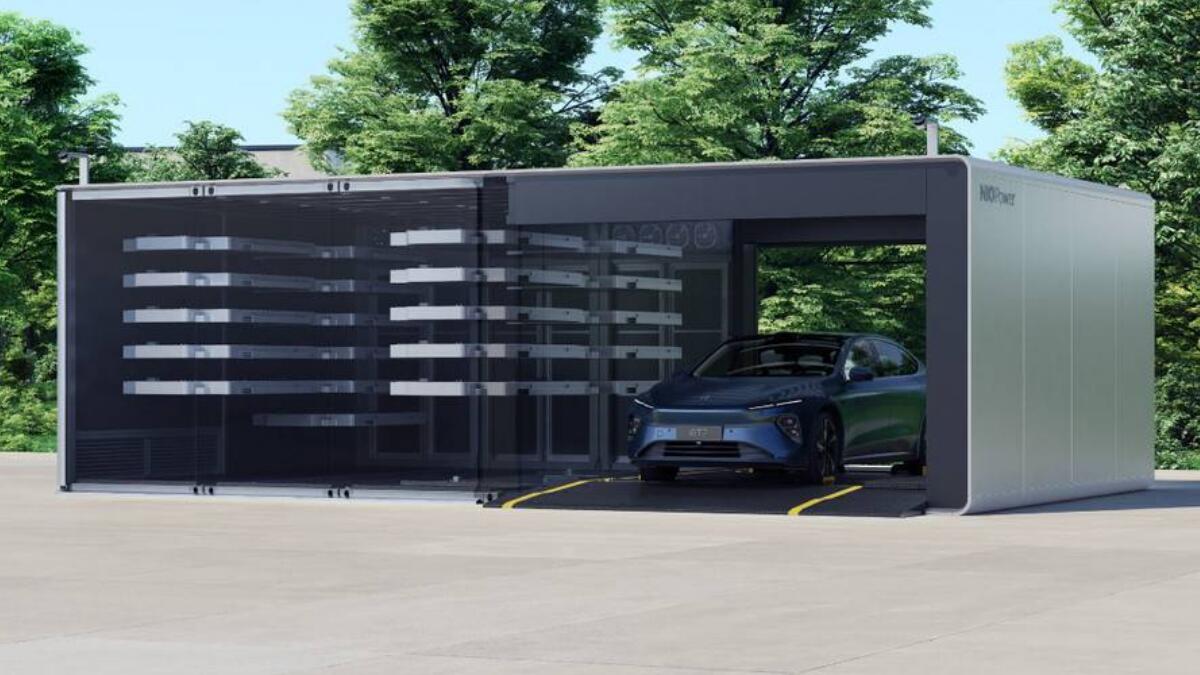The latest target means that in the second half of the year, Li Auto will need to deliver an average of about 45,000 units per month.

Li Auto (NASDAQ: LI) reportedly raised its sales target for the year, after seeing strong delivery growth over the past few months.
Li Auto recently raised its full-year sales target to 400,000 units from the original 300,000, local media outlet 36kr said in a report today, citing people familiar with the matter.
In addition to the overall sales target, Li Auto founder, chairman and CEO Li Xiang also set targets for sales of specific models, according to the report.
He set a goal for the Li L7 to achieve 20,000 deliveries in a single month in October, and to keep deliveries of the more expensive Li L9 and Li L8 above 10,000 units, bringing overall deliveries to 40,000 units/month, the report said.
Assuming Li Auto delivers 30,000 vehicles in June, the latest target means that for the remaining six months, Li Auto would need to average about 45,000 deliveries per month to meet its goal, the report noted.
Li Auto has seen strong growth in the past few months, at a time when growth in China's new energy vehicle industry has slowed significantly.
It delivered a record 28,277 vehicles in May, the third consecutive month to surpass the 20,000-unit mark. From January to May, Li Auto's cumulative deliveries reached 106,542 units, according to data monitored by CnEVPost.
On June 17, the day of Li Auto's first Family Tech Day event, the Li L7 sold more than 1,000 units in a single day for the first time, Li said earlier this month.
Li Auto launched the Li L7, its first five-seat SUV, on February 8 and currently offers three versions with starting prices of RMB 319,800 ($44,200), RMB 339,800 and RMB 379,800, respectively.
All of the company's current models are extended-range electric vehicles (EREVs), with the other two being the higher-priced, six-seat Li L8 and Li L9.
The Li L7 was a model that was almost canceled during development, Li said on Weibo on June 18. He said he was quite determined to axe the model last September, but several other executives stopped him.
Most members of Li Auto's management team thought the company should set an annual sales target of 360,000 units at the beginning of the year, but he ultimately decided to set a budget target based on annual sales of 306,000 units, according to a June 18 Weibo post from Li.
"This was partly because I didn't think we could be too optimistic about the economic environment this year, and partly because we didn't meet our budget targets for all three years from 2020-2022," he said.
Li said the too-low targets he set led the company to place orders at suppliers at the beginning of the year that were clearly not keeping up with current sales, so several key components would take more than a quarter to reach the right capacity if production ramp-up began now.
Li Auto currently has two production lines in its Changzhou, Jiangsu plant, one for double-shift production and one for single-shift production. Li Auto will not be able to achieve 10,000 units/week capacity until the fourth quarter, when both of its lines will be on double-shift production, according to Li.
On May 10, Li Auto management said in a call with analysts after announcing its first-quarter earnings that the company was aiming to reach its goal of 30,000 units delivered in a single month in June.
Notably, the 36kr report mentioned that sales of Li Auto's cheaper Air version have been less than expected.
Li Auto had hoped that the Air version models would bring in 30 percent incremental sales, but Li said in its earnings call that the lineup only brought in 20 percent additional sales, the 36kr report noted.
To meet its sales targets, Li Auto will need new growth, and Li's approach was to launch the Li L9 Pro, the 36kr report said.
In a recent regulatory list from China's Ministry of Industry and Information Technology, Li Auto filed for the Li L9 model without LiDAR, the report noted.
The Li L9 Pro is likely to be priced at around RMB 419,800, which will help boost sales of the Li L9 and Li L8 to more than 20,000 units/month while improving the company's competitiveness in the price range above RMB 400,000, the report said.
In addition, with the launch of Nio's (NYSE: Nio) new ES6 and ET5 Touring, and an RMB 30,000 price cut across the company's model lineup, Li Auto will face stronger competition in the RMB 300,000 to 400,000 price range, according to the report.
Nio is aiming to double its sales this year compared to last year, implying full-year sales of about 240,000 units, according to previous comments from the company's management.
($1 = RMB 7.2345)
NIO keeps goal of doubling sales this year despite price war causing greater challenges
The post Li Auto reportedly lifts 2023 sales target from 300,000 to 400,000 units appeared first on CnEVPost.
For more articles, please visit CnEVPost.



















